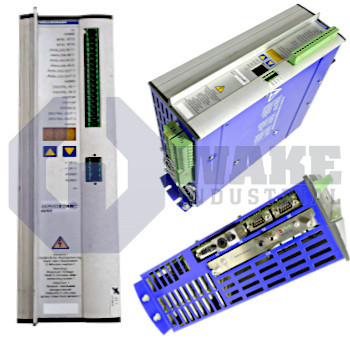Product Description
The SERVOSTAR-620-AS is a servo amplifier for industrial applications, which combines high precision motion control with high level of safety. It provides differential input voltage of + 10 to -10 V with ground potential at terminal X3/7 and 2.4 K ohm input resistance. The amplifier has a common mode voltage range of + 10 V to 10 V and an operating update rate of 62.5 us, thus restoring the control signal in a quick manner. This setpoint ramps feature provides users with the ability to constrain the rate at which the speed setpoint is allowed to change, providing for gradual increases and decreases in the motor speed.
Thermal management is a prominent function of the SERVOSTAR 620-AS and this incorporates thermosensitive devices such as PTCs embedded in the motor winding for gauging as well as controlling system temperature. The SSI-interface features output null position, whereby absolute serial position information is provided in any static or dynamic mode of operation. Adjustment of maximum/speed limit (final speed) is also managed, with the parameters offsets maintained at ~ 10 V for accuracy in speed control. Internal non-operational temperature is less than 55 degrees centigrade with an external heat sink of the fan being less than 60 degrees centigrade heat sink temperature. The internal brake resistor is capable of expending approximately 20W in operation with the fan not running.
There is one basic remark worth making regarding the restart lock: it does not ensure electrical separation and isolation of the power output. If asked to, the motor power terminals can be accessed, with one condition that full voltage isolation of the servo amplifier power supply from the mains must be done taking into consideration the discharge time of the intermediate circuit.


 Wake Industrial Warranty
Wake Industrial Warranty













